3 000 rub. for disconnecting eco
5 000 rub. with a choice
The car manufacturer is actively working on the environmental friendliness and efficiency of engines. To achieve these goals, new technologies are introduced to save fuel and reduce fuel consumption. On Mercedes cars, the function of automatically starting and stopping the engine is called - Start / Stop ECO.
Initially, when the engine is started, this function is activated, you can recognize its operation by paying attention to the ECO button which is located on the front control panel among other control buttons.

The essence of the function is an “instant” engine stop and the same quick engine start. Yes, of course, the function is convenient and can help save some of the fuel in traffic jams or when the car is at a traffic light.
The Start / Stop function can be disabled. Disabling is done by programming the unit and making changes to the algorithm of the function. It is possible to configure the system so that when starting the car, this function will not need to be deactivated, and if you want to activate it, you only need to turn it on with the button.

The Start / Stop ECO function can be disabled and then returned. The entire deactivation procedure takes no more than 30 minutes.
From the factory, the car already comes with the system turned on and if you want to turn it off, you just need to press the ECO button. The principle of disabling the ECO mode changes the algorithm - they started the car, ECO is deactivated, if you want to turn it on - then press the button, turning on the system is accompanied by the appearance of the corresponding indication on the button.
The disconnection process does not in any way affect the warranty; no installation of fraudulent modules is required. In addition, if desired, this function can be returned back.
› Hardware methods for deactivating a start-stop systemThe ever-increasing cost of energy and stricter legislative requirements to reduce harmful emissions into the atmosphere are forcing us to look for new opportunities in the automotive industry to save fuel and reduce exhaust emissions. For these reasons, the Start-Stop system was developed, which automatically turns off the engine for a short time when the car stops in front of traffic lights or barriers. The engine is started to continue driving without using the ignition key.
A bit of history:
The first phase of the concern's carbon monoxide reduction program called BlueMotion I was launched in 2006.
The goal of the first phase of the program was to reduce fuel consumption and, thereby, reduce CO2 emissions through the improvement of mechanical components.
Currently, the second stage of this program is already operating - BlueMotion II.
At the same time, the following measures were taken as part of the BlueMotion I program:
● Improved aerodynamics, especially underbody.
● Reduced rolling resistance.
● Reduced engine speed.
● Reduced fuel consumption by 0.6 or 0.7 (Variant) l / 100km with minimal additional costs.
● Reduced toxicity of exhaust gases.
● Reduced ground clearance - approximately 15 mm in front and approximately 8 mm in rear.
● A multi-function Plus display is installed that recommends gear selection.
● Compared to the serial gearbox, the gear ratios of some gears have been changed.
● The gearbox transmission range has been changed.
● Used 6 1/2 J x 16 steel wheels with Trendline caps.
● Improved driving performance (best-in-class energy-efficient tires used: 205/55 R 16 Conti Premium Contact 91H).
● Increased tire pressure by 0.3 bar.
Based on the BlueMotion I program, in 2008 the concern launched the new BlueMotion II program.
She builds on the success achieved in this area and indicates the following areas of work that will be carried out in the future:
● recovery (energy recovery during braking);
● creation of transmissions with low friction losses;
● tires with reduced rolling resistance (Super Rowi);
● steel wheels made using Flow "Forming technology;
● energy saving (distribution of gearbox ratios);
● start-stop system.
There are software methods for disabling the start-stop system, but on my mguig mg 2014 I could not disconnect it using vcds and vas-pc did not help me. It is also possible to disable the start-stop system using getway firmware if I’m not mistaken, but for this I need a VAG CAN lanyard, but I don’t have it. If you have information on software shutdown on Tiguan, then write to me.
Now about the "hardware" ways to disable: Having studied the self-study program, I found several options.
First option.
A bit of theory on how this works:
Battery status sensor in the battery control unit
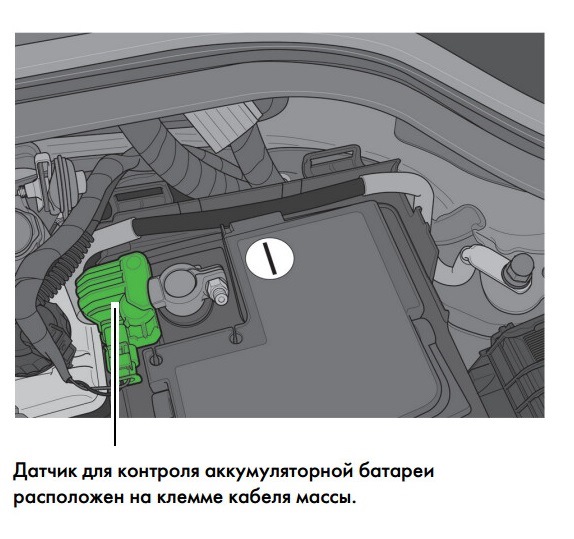
Information that the battery has enough electrical energy to restart the engine is essential for the start-stop system. Therefore, in the BlueMotion series cars, along with the start-stop system, they install a new battery with fiberglass filling, wiring for it and a new battery sensor connected to the control unit of the battery control system. This control unit is connected directly to the negative terminal and is connected via the LIN bus to the diagnostic interface of the data buses.
Failure Behavior
If the battery sensor is faulty, the battery condition cannot be correctly estimated.
An error is recorded in the fault memory of the diagnostic interface. The start-stop system shuts down.
Conclusion, disconnecting this wire from the “-” terminal (see the picture above), the system will not be able to receive information from the battery, the start-stop will not turn on according to the algorithm of work translated above, maybe according to the system logic, the battery charge may simply not be enough (for example no information, conditions are not met). At the same time, we will continue to observe on the dashboard when the start / stop system should work out in the form of an icon on the dashboard, but the engine will not stop :). I don’t observe errors on tidy, but if they scan with a cord they will be according to J367.
Of the minuses of this method, we disable receiving information on the LIN line from the battery. Do not forget to reconnect if you go to get detailed information about the state of the battery through a diagnostic adapter such as VAS-PC for diagnostics.
You can turn off the indication from the dashboard about triggering start-stop. Via VCDS
via block 17 INSTRUMENTS -\u003e adaptation -\u003e INDICATOR LIGHT FOR START \u003d STOP OPERATION
choose off. After that, information about the start / stop system does not appear on the dashboard, but unfortunately this does not work for my tidy.
The second option:
Disconnecting contacts from the button block with on off start-stop systems. In case of a malfunction of the start-stop system switch, the engine control unit turns off the system. Those by logic, maybe there is no connection with the button on. and off the system’s strat-stop, does not turn it on, there is no feedback and the driver will not be able to turn off or turn on the engine with the start-stop button if necessary. I have not had time to check this option yet, there is a certain difficulty to stick to these buttons and check.
Another option:
Solder the capacitor into the button block. I will not particularly consider it, the point is that it emits a click on the button when starting the engine, as if reversing mode, according to reviews, it does not always work out.
PS
The advantages of a start / stop system are obvious: a reduction in consumption and a reduction in CO2 emissions, more advanced and reliable mechanical components, automatic transmission, starter + recovery, etc.
Cons, no matter how you reduce the resource of the battery, most likely the engine, turbine and starter are not very good from such a jerk, and dullness when stopping at traffic lights and in traffic jams make me reach for the off button to disable start-stop.
Price tag: 0 ₽
Like 8 Share: Follow this car
Automakers are doing their best to increase the efficiency of their engines. One way to reduce the appetite of the power unit is a start-stop system. In short, the task of this system is to save fuel and reduce the amount of harmful emissions by reducing the engine idling time.
According to engineers, the car engine idles up to 30% of the time due to standing in traffic jams and at traffic lights. The principle of the start-stop system is that the engine turns off when the machine stops and starts again when the clutch pedal is pressed, if the transmission is mechanical or when the brake pedal is released in the case of an “automatic machine”.
Until recently, the start-stop system was used only on machines with a hybrid power unit. Currently, the trend has changed. More and more manufacturers are starting to install it on cars with classic internal combustion engines, both gasoline and diesel. According to experts, by 2015, half of all produced passenger cars in the world will be equipped with this system.
A little background on the start-stop system
The birthplace of the start-stop system is Japan. For the first time, Toyota engineers in the mid-70s of the last century started talking about the ability to turn off the engine while the car was idle. As a result, the luxury version of Toyota Crown was equipped with a device that turned off the engine after a half-second outage. Measurements showed that fuel consumption was reduced by 10%.
Ten years later, European manufacturers also began to install a similar system on some of their models. Volkswagen Polo and Fiat EU Regatta became pioneers. Much later, in the late nineties, Audi began to equip the start-stop system, in particular, the Audi A2 3L (the 3L index indicated fuel consumption - 3 liters per 100 km).
In the two thousandth years, other European manufacturers such as Citroen, BMW, Mini, Renault began to take over the experience of the “pioneers”. To date, almost all brands have this system in their arsenal.
How the start-stop system works
Structurally, the start-stop system consists of two elements: a device that provides multiple starting of the motor and control system.
Repeated engine start is implemented in one of the following ways:
- installing a reinforced starter;
- installation of a reversible generator (starter-generator);
- fuel injection into cylinders and ignition of the working mixture.
The simplest and most reliable design was obtained from Bosch. It was her name Stop & Start System that later became a household name. It is installed on BMW and Audi cars. On average, the level of harmful emissions and fuel consumption of cars is reduced by 8%.
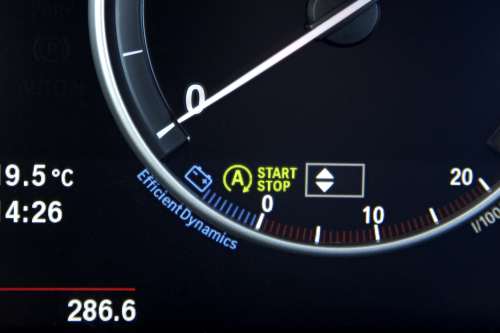
The main component of Bosch is a special starter with an extended service life, designed for repeated frequent engine starts. The starter drive mechanism has a low noise level, so that the engine starts unnoticed.
The control system has the functions of starting and stopping the engine, monitoring the level of charge (discharge) of the battery. The latter is designed to disable the start-stop system when the battery is low.
The control system consists of a number of input sensors, actuators and a control unit. Among the input sensors can be called a crankshaft speed sensor, a brake pedal (clutch) position sensor, a battery level sensor and a bunch of other sensors that are part of the engine management system.
This version of the start-stop system does not have its own control unit, therefore, all the control functions are performed by the engine ECU, using specialized software.
Actuators include devices of auxiliary systems of the power unit - nozzles, ignition coils and starter.
In general, the Bosch system has virtually no unique elements of its own; instead, existing sensors and devices are used. Thanks to this, the manufacturer has achieved high reliability and durability.
Start-stop system conditions
In order to prevent the motor from shutting down when it is not required, engineers tie its work to several conditions, and different manufacturers set different sets of parameters. The start-stop does not work when the engine is not warmed up due to the fact that the crankshaft speed at this time is higher than idle. Also, the start-stop will not be activated if the heating of mirrors, windows or seats is turned on, the generator is faulty or the battery is discharged, the car stopped after turning off reverse gear or the wheels are turned at a large angle (the last two conditions do not allow the system to turn off the engine when maneuvering in the parking lot). In addition, the system is activated only when the vehicle speed exceeds 4 km / h, while the driver's door must be closed, and the driver must be fastened.

The manufacturer can set additional conditions for the system. For example, one of these may be the ambient temperature. In 2010, the German magazine Auto Motor und Sport published tests of six cars: Audi A4, Volkswagen Passat, Ford Mondeo, Opel Insignia, Mercedes S-Class and BMW 3 Series. All cars with diesel powertrains. Audi, BMW and Volkswagen were equipped with a start-stop system.
Cars had to drive 200 km on winter roads. As a result, on Audi and BMW, the system worked several times, while on BMW there was not a single operation. This suggests the conclusion that minus temperature is also a limiting factor.
The scheme of the start-stop system on Audi cars
This system works as follows. When the car stops, the engine speed drops to idle, the crankshaft speed sensor gives an appropriate signal, and the computer stops the engine. All included electrical consumers (headlights, air conditioning, etc.) continue to operate on battery power. When the driver either releases the brake, depending on the type of transmission, the control unit receives a signal from the sensor and resumes engine operation. Then the cycle repeats.
As you can see, in an Audi car equipped with a start-stop system, the battery experiences increased loads and wears out much faster than in the same cars that do not have this system. To prevent Bosch from playing a cruel joke with the driver, the control unit continuously monitors the battery level. If the voltage at its terminals drops below a certain threshold, the system automatically turns off. When the charge is restored, after a long trip or using the charger, the system automatically resumes work. If desired, the driver can disable it forcibly by pressing a button on the control panel.
Similarly, the Idle Stop & Go system works on KIA vehicles. Unlike Audi, the generator in Korean cars shuts off under heavy engine loads to reduce fuel consumption, and turns on and charges the battery when braking. When the charge level of the latter drops to 75%, the system turns off. Another difference between KIA and Audi is that the system turns off when the air conditioner is turned on.
Reverse Generator System
A system called STARS (Starter Alternator Reversible System) is available from Valeo. It is used on Citroen and Mercedes cars.
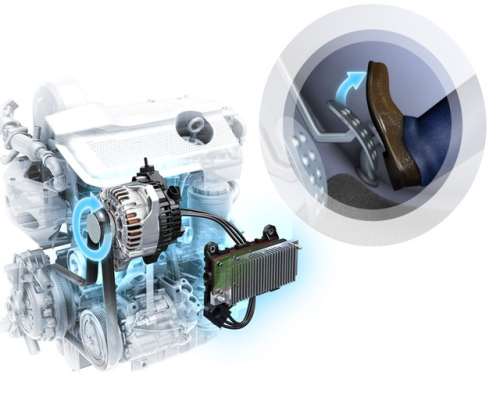
Its main element is a reversible generator - an alternating current electric machine, which works both as a generator and as a starter - depending on conditions. For proper operation, he needs a special belt with a reversible tensioner, which allows to transmit force both forward and backward.
The reversible generator does not generate noise during operation and turns on twice as fast as a conventional starter (0.4 seconds). Unlike the system used in Audi vehicles, STARS has its own control unit that interacts with the engine control unit. The principle of operation and a set of input sensors is similar to the previous version.
A further development of STARS is the use of a regenerative braking system. By recovering braking energy, it is possible to further reduce fuel consumption.
Fuel Injection System
This system, called SISS (Smart Idle Stop System), was developed by Mazda and is used on gasoline engines with direct injection. The principle of her work is as follows.
When the engine turns off, the pistons stop in strictly defined positions, most beneficial for the subsequent start of the power unit. After releasing the brake pedal, gas is injected into the cylinders, a discharge is supplied to the spark plugs, and the working mixture ignites. Additionally, for a short time, the starter turns on. SISS is only applicable to vehicles with automatic transmission.

Complaints about the start-stop system by users
Many car owners, especially those with cars with turbo engines, are unhappy with how the start-stop system works. For example, on Tiguan, all power units of which have a boost, they prefer to turn it off to extend the life of the turbine. At the same time, Volkswagen itself claims that the operation of this system is designed for the fact that the engine is equipped with a turbocharger, and on the same Tiguan, the service life of the turbine due to periodic engine shutdowns does not become less.
Also, many note that the motor resumes its operation too noticeably, sound is heard and vibrations are felt. The last thing that is hard to argue with is that the battery in European cars suffers a lot, especially when driving in traffic jams. Of course, the system can be turned off, but doing it every time is not very convenient.
Start-stop system, a conspiracy of automakers?
If you bought a new car 2.3–5 years ago and the car you purchased was of a medium or higher price category, most likely your car has one of the modern technologies that mercilessly turns off the engine at every stop if the car freezes for more than 1-2 seconds. All this disgrace is called the Start-Stop system, and it is made for the sake of ecology and profitability. Whether the game is worth the candle, we’ll figure it out.
The Start-Stop system is exposed as a technology that they try to present as one of the most ingenious developments in the automotive industry, the next in importance to the invention of wipers or rear-view mirrors. Some automakers also call this feature "micro-hybrid technology." Why? We will explain it soon.
In theory, a Start-Stop system has nothing but advantages. Want to minimize fuel consumption in the city and traffic jams? A new feature is able to provide this to you! Take care of mother nature and do not want to cause the disappearance of penguin colonies in Antarctica? Your simple system can satisfy your desires here as well, according to statistics, the amount of emissions in a city from cars equipped with it really decreases.
As is known from the official nomenclature, the Start-Stop system simply turns off the internal combustion engine (ICE), preventing its idle operation, during long (often not completely long) stops. When you need to start, the device literally starts with a magic wand, this will happen as soon as you take your foot off the brake pedal or press the clutch to engage first gear.
New vehicles equipped with the latest versions of the system go from the “off” to the “on” position almost imperceptibly, in the blink of an eye, literally.
Does the Start-Stop system harm the car starter?
Since the system can operate many times in a short period of time, this can put a serious load on the standard starter, leading it to a premature failure. Therefore, cars that have a similar system use reinforced electric launchers designed to work in difficult conditions at high multiple loads. Such reinforced elements are truly capable of prolonging life and surviving stress.
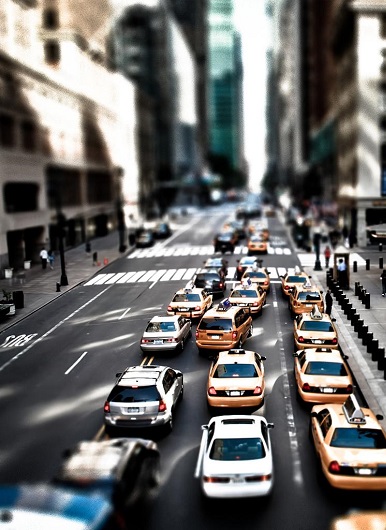 Cars are also equipped with higher-quality batteries with a large volume or additional batteries are installed, for recharging which in some vehicles they are charged through a regenerative braking system, thereby creating micro-hybrids from them. In the general scheme of the family of hybrid cars, micro-hybrids are located one step below the so-called “soft” hybrids (Mild Hybrid), and two steps behind the usual types of hybrid cars. *
Cars are also equipped with higher-quality batteries with a large volume or additional batteries are installed, for recharging which in some vehicles they are charged through a regenerative braking system, thereby creating micro-hybrids from them. In the general scheme of the family of hybrid cars, micro-hybrids are located one step below the so-called “soft” hybrids (Mild Hybrid), and two steps behind the usual types of hybrid cars. *
* If you want to know how many types of hybrids exist and how they differ from each other, go to our article: We will put everything on the shelves for you there.
Some automakers have resorted to the so-called integrated starter-generator circuit (ISG), while others use only a reinforced starter, which takes all the hard work every day. Both versions of the Start-Stop system work in a similar way and achieve the same effect, improve fuel economy by shutting down the engine during stops and starting it in a minimum period of time, if necessary, start driving.

If you answer the previously posed question about the harmful effects of the system on the starter, then there are no official statistics on this subject. But from snippets of data collected from various sources it is known that owners of vehicles equipped with the Start-Stop function have already faced premature failure of the starter. Is this a direct influence of the system? Most likely yes, judging by what kind of load the starter experiences with such intensive work, however, we will not officially blame the system for the failure of the launchers.
All this is good and beautiful, all the more, it is worth considering that this technology is not expensive and weighs much less compared to those pound "weights" that are found in ordinary hybrid cars in the form of batteries and electric motors. Everything is very cool and thoughtful.
And yet, is it really so cloudless, as the automakers are trying to present to us? Are there really flaws?
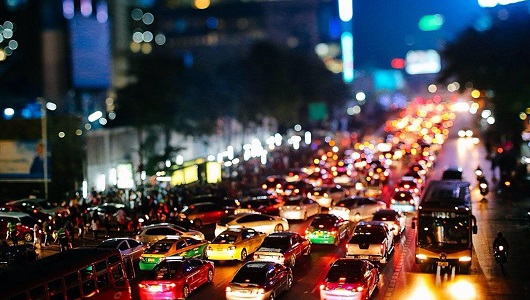
1. Start-Stop system disables batteries
Modern cars have so many electronics and consumers of electricity that they need a lot of electricity to continue working, especially when the main “distributor of volts to battery” shuts down. Headlights, climate control, audio system, even airbags will not work if there is no electricity. That's why in cars with a Start-Stop system, the battery goes through much more tests and is much heavier loaded than in cars with a standard circuit.
2. Start-Stop will reduce the life of the machine, but it’s profitable for manufacturers

You will probably say: "Hey, stop talking! Automakers are not stupid, they have thousands of engineers who already thought for us that the car is good and that is not very. Everything is calculated!" Of course, I’m also sure that they did it, they calculated everything ... Only in whose favor? Do not forget the auto business, first of all, the business. And their main goal is to sell cars, as many cars as possible. We live in the 21st century, no one else produces cars that can travel for decades and run millions of kilometers during this time. Now everything is tightly limited, you want to ride, or overpay at exorbitant prices for spare parts.
3. Turbocharging is afraid of this system like fire
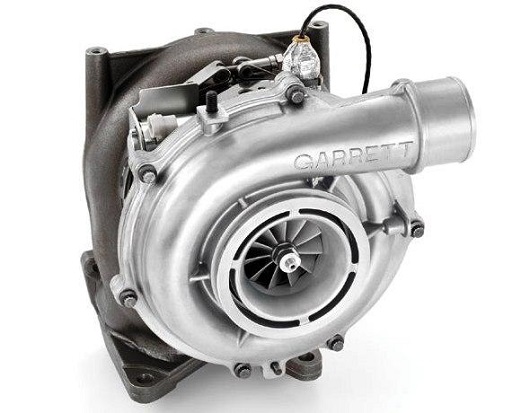
Secondly, and this is a much more important factor, for most modern cars, this is also done mainly in the name of efficiency. You probably know to what high temperatures a turbine can heat up under load. Older guys may remember that in each guide to a turbocharged car, they always wrote the most important postscript, which urged drivers not to immediately shut off the engine after an intensive or high-speed trip, but to idle it for a minute or two, allowing the turbine to cool. Even turbo-timers for these purposes came up with, for those who value time and it is important that the vehicle is in good working condition.
Most new turbocharged cars use ball-bearing turbocompressors, they are oil and water cooled, which should guarantee a reduction in the risk of overheating when the heated turbine is suddenly shut off or the oil channels are coked. Note that risks are only reduced, but they are not going anywhere.
Therefore, I am not entirely sure that Start-Stop systems on powerful turbocharged cars like the BMW M-Series or Mercedes-AMG are a good option to keep their engines in working condition for many years.
And yet, can you imagine what will happen to multi-turbine engines, which will soon have two, three, and even turbochargers?
4. The Start-Stop system leads to quick engine wear

And last, but certainly not least, even if you do not have a turbocharged ICE under the hood, but your car stops the engine at each stop, you will encounter a problem of durability, this time of the engine itself. Judge for yourself, an ordinary engine in its life goes through about 50,000-100,000 cycles of starting and stopping. The motor that comes through goes through the million / millions (?) Of these cycles over the same period.


